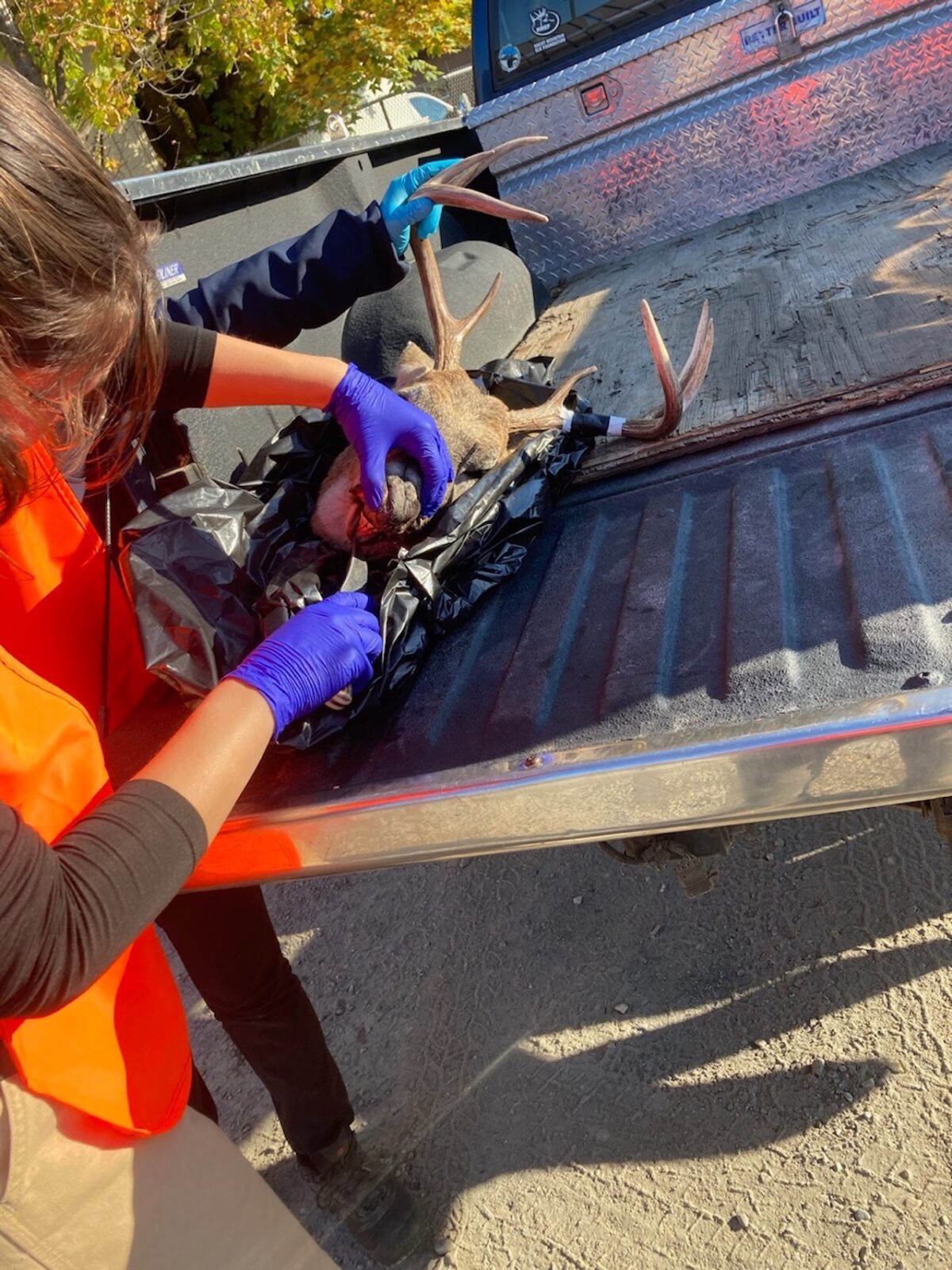
CWD Sampling Continues At Eastern Washington Game Checks
Washington wildlife biologists took samples from just over 100 deer for chronic wasting disease testing at 10 check stations during the second weekend of modern firearms season in Region 1, a bit more than were collected at both game checks and in the field at this same time last year.

WDFW says the tally included 62 whitetails and 40 mule deer, as well two moose, with 32 of the animals coming from District 2 (the upper Channelled Scablands, Palouse and Spokane area), another 32 from District 3 (Blue Mountains and foothills), 24 from District 1 (Northeast Washington), and 16 from Units just outside of Region 1.
The check stations operate during the general rifle season and are a part of WDFW’s increased sampling for the always-fatal deer family disease following its confirmation in Idaho in 2021 and in a dead whitetail doe found just north of Spokane.
It’s probably still too early to say whether last weekend’s and the opener’s increased collection over 2023 are evidence of herds rebounding from disease dieoffs earlier this decade or more awareness around the need to test harvests to help identify further outbreaks, but successful hunters in Game Management Units 124 (Mount Spokane), 127 (Mica Peak) and 130 (Cheney) are now required to have their deer, elk and moose checked.
Those three units are all in District 2 and encircle Spokane. That infected whitetail was found on private property in the Fairwood neighborhood just outside the city limits.
There are also other new requirements in place this season, including one that bars taking whole deer, elk or moose carcasses from any 100-series game management unit to other parts of Washington.
The ideas behind all that are that testing helps to determine how prevalent CWD is in big game herds and that its spread can be slowed or stopped by not spreading infected parts further around the state. The disease can lead to permanent population declines in hunted wildlife, so hunter cooperation is key to helping protect the state’s herds.
Sampling involves removing the retropharyngeal lymph nodes from the base of the skull near the spine and windpipe. The nodes concentrate the malformed prions that cause CWD. Hunters can dig them out themselves or take their harvest’s head and 3 inches of neck to check stations or set up an appointment with WDFW.
“For the entire surveillance year (July 1-today), we have collected 826 samples, of those 159 roadkills and 620 harvested animals,” reported Staci Lehman, a WDFW spokeswoman based in Spokane, this morning. “We collected 164 samples from GMU 124 where we detected CWD. CWD has not been detected in any of the samples tested so far by the lab, which is 143.”
Today is the last day of general rifle mule deer season in all of Eastern Washington. Whitetail hunting continues through today or October 25, depending on location, and will reopen in the northeast corner for the November 9-19 late hunt, when WDFW will again operate staffed check stations.
For more on WDFW’s CWD rules and response, including the locations of sampling and 24/7 collection stations, the latter of which have been expanded since even the start of this hunting season, and more, see this web page.
